
Blog
Exploring the Future of Distinctive Furniture Designs in a Modern World
In today's rapidly evolving world, where aesthetics and functionality collide, the realm of furniture design is undergoing a remarkable transformation. As we explore the future of distinctive furniture designs, it becomes increasingly evident that "Furniture Unique" pieces are not merely functional items; they are expressions of individuality, creativity, and innovation. The modern consumer yearns for furniture that reflects their personality and lifestyle, prompting designers to push boundaries and reimagine traditional concepts. This blog will delve into the exciting possibilities of furniture design, examining emerging trends, unique materials, and innovative techniques that contribute to the creation of furniture that stands out in a crowded marketplace. From bold shapes to sustainable practices, the journey into the future of distinctive furniture will inspire both designers and consumers alike to embrace the uniqueness of their living spaces.

The Evolution of Furniture Design: Balancing Tradition and Innovation
The evolution of furniture design stands at a fascinating crossroads where tradition meets innovation. According to a 2023 report by the International Furniture Fair, the global furniture market is projected to reach $650 billion by 2025, driven by both traditional craftsmanship and cutting-edge technology. As consumers increasingly seek unique pieces, designers are reinterpreting classic styles through modern materials and techniques, leading to distinctive furniture that appeals to contemporary tastes while honoring historical influences.
Furthermore, the rise of sustainable design practices is transforming the industry. A study by Wood Products Annual Market Review indicated that over 60% of consumers prioritize eco-friendly materials in their buying decisions. As a result, designers are incorporating reclaimed wood and recyclable materials in their creations, balancing the need for aesthetic appeal with environmental responsibility. This synergy between heritage and innovation is not just a trend; it's shaping the future of furniture design, ensuring that it remains relevant in a rapidly changing world.
Exploring the Future of Distinctive Furniture Designs
This chart illustrates the emerging trends in furniture design for 2023, showcasing the growing importance of sustainable materials, smart technology, custom designs, minimalism, and ergonomics in modern furniture development.
Integrating Digital Technology in Custom Furniture Creation
In the contemporary furniture market, integrating digital technology into custom furniture creation is becoming a game-changer. According to a recent report by Technavio, the global custom furniture market is projected to expand by USD 29.74 billion from 2021 to 2026, driven largely by advancements in digital design tools and production processes. Technologies like 3D printing, augmented reality (AR), and laser cutting are enabling designers to create truly unique pieces that reflect the specific needs and preferences of consumers, thereby enhancing user engagement and satisfaction.

The rise of platform-based design solutions has also significantly empowered consumers. A survey from the International Interior Design Association (IIDA) revealed that 63% of interior designers are increasingly using digital platforms to collaborate with clients, allowing for real-time feedback and adjustments. This shift not only streamlines the design process but also reduces time to market. As consumers demand personalized solutions, these technologies are helping to bridge the gap between traditional craftsmanship and modern aesthetic sensibilities, ensuring that distinctive furniture designs continue to flourish in a rapidly changing world.
Sustainable Materials: The Future of Eco-Friendly Furniture Design
In recent years, the furniture design industry has seen a significant shift towards sustainability, driven by increasing consumer awareness and a demand for eco-friendly products. According to a report by Grand View Research, the global eco-friendly furniture market is projected to reach $300 billion by 2027, growing at a CAGR of 6.5%. This transition is largely fueled by the use of sustainable materials such as bamboo, reclaimed wood, and recycled metal, which not only minimize environmental impact but also offer unique aesthetic qualities.
Incorporating sustainable materials into furniture design not only aligns with global sustainability goals but also caters to a growing demographic of environmentally conscious consumers. When choosing furniture, consider products made from certified sustainable sources, which can reduce carbon footprints and support responsible forestry practices.
**Tips:** When shopping for eco-friendly furniture, look for certifications like Forest Stewardship Council (FSC) and consider local manufacturers to minimize transportation emissions. Additionally, opt for multi-functional pieces that reduce the need for excess items in your home, promoting a minimalist and sustainable lifestyle. As furniture designers continue to innovate, the emphasis on sustainability will play a crucial role in shaping the distinctive furniture of the future.
Exploring the Future of Distinctive Furniture Designs in a Modern World - Sustainable Materials: The Future of Eco-Friendly Furniture Design
| Material Type | Environmental Impact | Durability (Years) | Renewability | Cost ($/sqft) |
|---|---|---|---|---|
| Bamboo | Low - Rapid growth and minimal pesticides | 15 | Highly renewable | 3 - 5 |
| Recycled Metal | Moderate - Energy expenditure in recycling | 30 | Non-renewable but sustainable | 5 - 10 |
| Cork | Low - Harvested without harming trees | 20 | Renewable | 4 - 7 |
| Reclaimed Wood | Low - Reduces deforestation | 25 | Limited, depends on source | 8 - 12 |
| Plant-Based Resins | Low - Made from renewable resources | 10 | Renewable | 6 - 10 |
Personalization Trends: Tailoring Furniture to Individual Lifestyles
In today's fast-paced and ever-evolving marketplace, personalization has emerged as a pivotal trend in furniture design. Recent industry reports indicate that over 60% of consumers expressed a preference for unique furniture solutions that reflect their individual styles and lifestyles. This shift towards personalization not only enhances customer satisfaction but also increases brand loyalty, as consumers are more likely to return to brands that offer tailored options. With advancements in technology, such as 3D printing and augmented reality, designers can now create customizable pieces that cater to specific preferences, from color and material to size and functionality.
Furthermore, the rise of remote working and flexible living arrangements has influenced furniture trends, encouraging brands to develop multifunctional and adaptable pieces. According to a study by the International Home Furnishings Association, about 73% of respondents reported a need for furniture that seamlessly integrates into their daily activities, reflecting a lifestyle that values both aesthetics and practicality. This demand for adaptable solutions opens up a new frontier for designers, allowing them to craft distinctive furniture that not only meets functional requirements but also resonates with the evolving tastes of a diverse consumer base.
The Role of Smart Technology in Shaping Modern Living Spaces
As modern living spaces evolve, the integration of smart technology into furniture design is becoming increasingly important. Smart furniture goes beyond mere aesthetics; it enhances functionality and convenience, catering to the needs of a tech-savvy generation. For instance, desks with built-in wireless charging, sofas that can adjust their firmness, or coffee tables equipped with Bluetooth speakers illustrate how technology can seamlessly blend with home decor. These innovations reflect a shift towards creating environments that not only look good but also improve our quality of life.

Moreover, the role of smart technology extends to optimizing space utilization, particularly in urban settings where every square foot counts. Modular furniture that can be reconfigured on demand and storage solutions that incorporate smart sensors to manage household items are just a few examples. Such advancements are not merely about adding convenience—they herald a new era of personalized living where comfort and efficiency are paramount. As we continue to explore distinctive furniture designs, it’s clear that smart technology will play a pivotal role in shaping modern interiors, making them more adaptive and responsive to our evolving lifestyles.
Related Posts
-
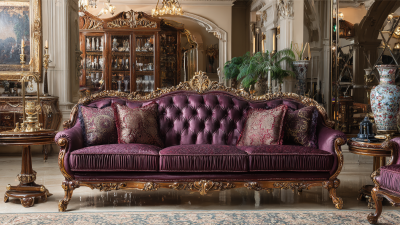
Solutions for Elevating Your Space with the Best Luxury Furniture
-
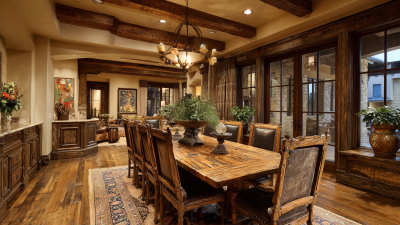
The Ultimate Guide to Choosing the Perfect Solid Wood Dining Room Table for Your Home
-
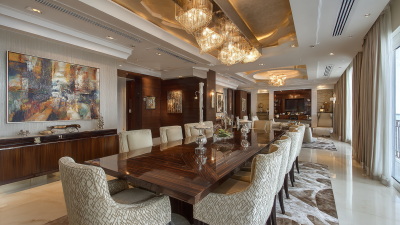
Discover Reliable Chinese-Made Dining Room Furniture: Quality You Can Trust for Global Markets
-

Top Strategies for Enhancing Your Wooden Desk Legs for Modern Interiors
-
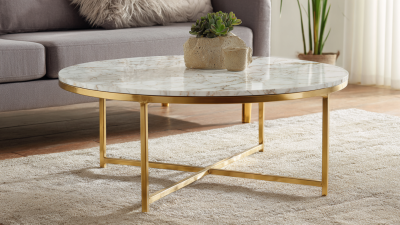
Exploring the Top 5 Best Marble Round Coffee Tables: A Comprehensive Comparison for Global Buyers
-
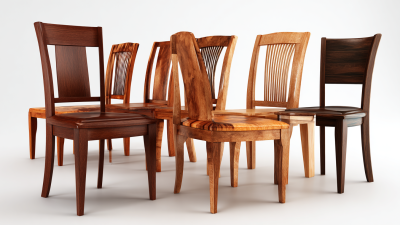
How to Choose the Perfect Wood Dining Chairs for Your Home Based on Expert Recommendations
